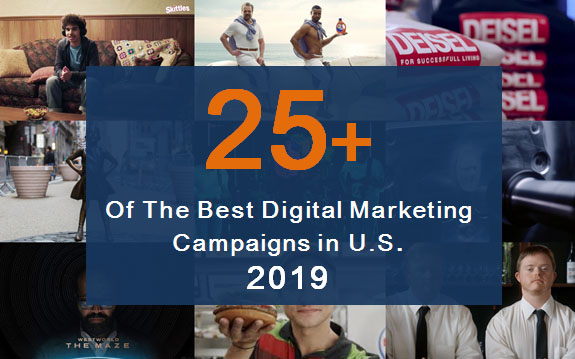Optimizing Your Tech Stack for Better Marketing Performance
Cybersecurity | Sep 24, 2024
Every time an innovation is introduced, there’s as much uncertainty as there’s confidence in its potential. When cloud computing was born in the 1960s, some people immediately realized how it could be a game changer in various industries. Over the decades, however, others have grown concerned about how well it could protect their data from cyberattacks.
For the record, these concerns still exist. But as the world learned hard lessons during the first few years of the 2020s, more industries have rapidly digitized their systems to not fall prey to crippling circumstances a second time. This is especially true in marketing, where it only took one terrible year to challenge what was common sense at the time.
Digital transformation is unlikely to stop at this point, with a recent report from the Harvard Business Review stating that almost 90% of large companies globally are undergoing one. It also stated that most of them have yet to achieve significant cost savings, let alone revenue boosts. Long story short, there’s still room for any current tech stack to improve. (1)
Fortifying Your Cybersecurity
These days, it’s impossible to talk about tech stack optimization without talking about cybersecurity. Other aspects are equally important, but safeguarding valuable data from cyberattacks—whether orchestrated independently or sponsored by competitors—takes priority above everything else.
The reasons for this can’t be any more straightforward, starting with major financial loss. In its latest Global Financial Stability Report, the International Monetary Fund reveals that the average extreme losses to cyberattacks have quadrupled to USD$2.5 billion from 2017 to 2024. This figure doesn’t include indirect losses like damage to a brand’s reputation. (2)
Even small businesses aren’t spared from the scourge of these sophisticated attacks. In fact, according to CloudSecureTech.com, they face more trickery-type attacks, such as phishing, than large businesses. When hit, 60% of them shut down within half a year.
Although total immunity from cyber threats is unachievable, it’s no excuse not to invest in proper cybersecurity suites and best practices. Perpetrators mainly rely on speed to pull off their data heists, taking the path of least resistance into a business’s IT system. Having multiple measures barring the attacker’s path can deter or discourage them from proceeding further.
Industry experts refer to this as defense-in-depth cybersecurity, where multiple solutions work together to form a multilayered barrier. If one layer is breached, it’s up to the next layer to thwart the attack as best it can. This approach is designed to protect systems from the most common flaws in a business’s network security. According to Prototype:IT, these include outdated or unpatched software, incorrect network configurations, and even insider threats.
Adopting AI Technology
Some of you reading this may still have reservations about AI, and not necessarily in a way similar to how movies and shows portray it. Then again, it’s hard to blame you if you’re still on the fence, given the abundance of stories of AI’s trial-and-error struggles.
To address the elephant in the virtual room, AI won’t be replacing humans—at least not as it stands right now. A recent MIT study found that only 0.4% of worker wages in the entirety of the U.S. economy right now justify automation as the cheaper option than hiring human workers. AI adoption is inevitable but not at a lightning pace, as most people believe. (3)
Despite its hiccups, a growing consensus among business leaders is that AI will be a vital asset moving forward. In the realm of marketing technology (MarTech) alone, one industry report stated that 73% of some 2,000-plus apps released over the second half of 2023 used AI to an extent. Of these AI-powered tech tools, over a third of them were content tools. (4)
It doesn’t take rocket science to know the kind of AI it’s referring to—it’s generative AI. And experts warn that not seeing its potential or refusing to adopt it risks getting left in the dust.
There’s a wealth of opportunities for generative AI in MarTech to give marketing strategies a much-needed infusion, from generating fresh ideas to personalizing content. However, it pays to remember that AI is no substitute for the human marketer. Believing otherwise is a misconception that, more often than not, leads to disastrous results.
Shrinking Your Tech Stack
Think of an effective tech stack like a Jenga tower. You can afford to remove a few blocks and it’ll still stay standing, but the risk of collapse increases as it gets higher. In context, having plenty of tools doesn’t always lead to increased efficiency. If anything, it’s a recipe for disaster.
Today’s innovations can become legacy systems relatively quickly. There’s no exact figure as to the pace at which hardware and software become outdated, but Moore’s law gives a decent picture of the current pace of technological progress. Chips are getting smaller but more capable and efficient.
As helpful as a business’s legacy systems remain today, a lack of updates and continued support means they’re vulnerable to evolving cyber threats. Just one of these remaining in the tech stack can serve as a backdoor that attackers can open with ease.
Even if business networks—by some miracle—escape the gaze of cybercriminals, legacy systems can inflict their own inconveniences. These range from sluggish performance to government scrutiny for noncompliance with specific laws.
In-house IT teams are then left with the unenviable task of deciding whether to maintain or replace such systems. Most of the time, they choose the latter due to the reasons earlier. Conversely, the best reasons to keep legacy systems are:
- They still serve their purpose well without limiting the business’s growth.
- They can serve as a backup with a level of risk the business can withstand.
- No viable alternative exists at the moment.
Yet, even in this situation, it isn’t prudent to expect outdated hardware and software to be part of the tech stack forever. Necessity is the mother of invention, and modern technology will eventually develop the means to justify replacing them. The same is true when the risk of keeping them outweighs the benefits.
Conclusion
Between growing reliance on technology and the increasing digitalization of the business environment, ensuring optimized tech stacks is one of the most crucial things business owners can do. On top of that, this is a continuous process, as with every new tech that rolls outcomes significant change. Whether for better sales enablement or streamlined project management, your technology stack should always be up for any task.







